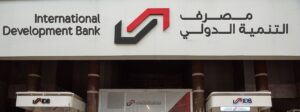- Egypt plans to direct the financing to clean transportation, renewable energy, energy efficiency, and sustainable water and wastewater management investments.
- Since its debut in 2005, the Panda Bond has gained traction among foreign borrowers looking to diversify their financing channels.
- South Korea became the first foreign sovereign panda bond issuer in 2015, followed by Poland, Hungary, and Portugal.
Egypt’s Sovereign Sustainable Financing Framework
Egypt has emerged as the first African country to issue a Sustainability Panda Bond, tapping into the rapidly expanding Chinese debt capital markets. The three-year Panda Bond, valued at $478.7 million, signifies Egypt’s commitment to driving economic growth through an inclusive and environmentally responsible approach, as outlined in its Sovereign Sustainable Financing Framework.
Launched before last year’s COP27 climate conference in Egypt, this framework targets sustainable development investments. Some target investment areas are clean transportation, renewable energy, energy efficiency, and sustainable water projects. Additionally, the country will invest in wastewater management, financing micro, small, and medium-sized enterprises, and several vital health service initiatives.
A historic move in Africa’s green financing
“Egypt is the first African sovereign to issue Panda Sustainable Bonds in the Chinese financial markets. This is a historic move for the country and the entire continent. We have paved the way for alternate, sustainable financing for our African neighbours and have deepened the partnership with our Chinese counterparts. It’s more than just a financing source; it’s a testimony of how important our economic and financial ties are with the Government of China,” Egypt’s Minister of Finance Mohamed Maait said.
The African Development Bank (AfDB) and the Asian Infrastructure Development Bank provided partial credit guarantees to support the issuance. The combined guarantees from the two lenders with triple-A ratings helped attract investors and secure competitive terms for the transaction.
The Bank of China Limited, with support from HSBC Bank (China), was the lead underwriter and bookrunner.
“This first Panda Bond issuance by an African sovereign is the perfect example of how AfDB regional member countries could leverage the Bank’s AAA credit rating to penetrate new markets and mobilise sustainable financing at competitive terms from international investors,” AfDB Director-General for North Africa Mohamed El Azizi said, describing the issuance as ground-breaking.
Read also: AfDB surpasses Egypt’s climate change funding target by 64pc to $2.3Bn
China’s Sustainable Panda Bonds
A panda bond represents a renminbi-denominated bond issued in mainland China. It is administered by a foreign entity such as a sovereign or local government, multilateral development institution, financial institution or non-financial enterprise.
The proceeds of green panda bonds are earmarked for green assets or projects per China’s 2021 green taxonomy. Whether green or not, issuing panda bonds allows foreign issuers to tap into China’s onshore bond market’s deep and diversified investor base. International investors can participate through the “Bond Connect” regime launched in 2017.
Since its debut in 2005, the panda bond has been gaining traction among foreign borrowers looking to diversify their financing channels and provide possible access to low-cost capital.
The panda bond has become increasingly attractive due to the gradual internationalisation of the renminbi. South Korea became the first foreign sovereign panda bond issuer in 2015. Other countries like Poland, Hungary, and Portugal followed and signed up for the Belt and Road Initiative.
The first Green Panda bond was issued in 2016 by the New Development Bank, a multilateral lender established by the BRICS members Brazil, Russia, India, China, and South Africa.
With a coupon of 3.07 per cent, the five-year bond raised $448 million in China’s onshore bond market to support infrastructure and sustainable development projects in BRICS countries.
Benefits of Panda Bond issuances
In the context of financing energy transitions in Africa, multilateral development banks such as the New Development Bank and the AfDB are arguably more suitable than African countries as potential green panda bond issuers.
They benefit from robust credit ratings, whereas several African countries received harsh credit downgrades after COVID-19. The potential issuance of green panda bonds by multilateral development banks with an African focus indicates some of the mutual benefits.
For African countries, it helps raise the capitalisation of their development banks to enable lending towards eligible green assets and projects. A portion of the proceeds can potentially be structured to repay some of the outstanding debt obligations to China.
For China, domestic institutional investors, such as insurance companies and possibly some retail investors, can tap into overseas green assets and projects. With further credit enhancement effects from multilateral development banks’ participation, current creditors can seek comfort in knowing about the slightly strengthened debt sustainability on the continent.
Green Panda bonds can potentially help connect African borrowers with China’s vibrant onshore bond market to access low-cost financing for clean energy projects.
Egypt Pioneering Green Financing in Africa
This is not Egypt’s first time tapping into the sustainable bond markets. “While Egypt may be the first African nation to issue on the Panda Bond Market, it won’t be the last, as we stand ready to support RMCs to mobilise new development financing at scale on both local and international capital markets,” AfDB Acting Director for Financial Sector Development Ahmed Attout said.
In 2020, the African nation became the first country in the Middle East/North Africa region to issue a green bond. The five-year green bond was initially announced for $500 million, with an interest rate of 5.75 per cent.
The bond was more than seven times oversubscribed, which led the government to increase its size to $750 million and to lower the interest rate to 5.25 per cent (lower than Egypt’s benchmark conventional bonds).
Moreover, the bond witnessed the participation of an unprecedented 16 new investors in bond issuances denominated in US dollars.
In 2022, it was the first African and Middle Eastern country to access Japanese capital markets, issuing a Samurai bond of about $500 million (60 billion Japanese yen).
A credit guarantee from the Japanese bank Sumitomo Mitsui and government coverage from Nippon Export and Investment Insurance underpinned the March 2022 issuance. The annual coupon rate was 0.85 per cent for five years when average yearly coupon rates stood at 2.33 per cent for dollar-denominated bonds. Egypt’s Sovfive years Framework aligns with the AfDB Group’s country strategy for Egypt and its High-5 operational priorities.
Read also: Green Bonds: A possible solution to the Zimbabwe power crisis.




